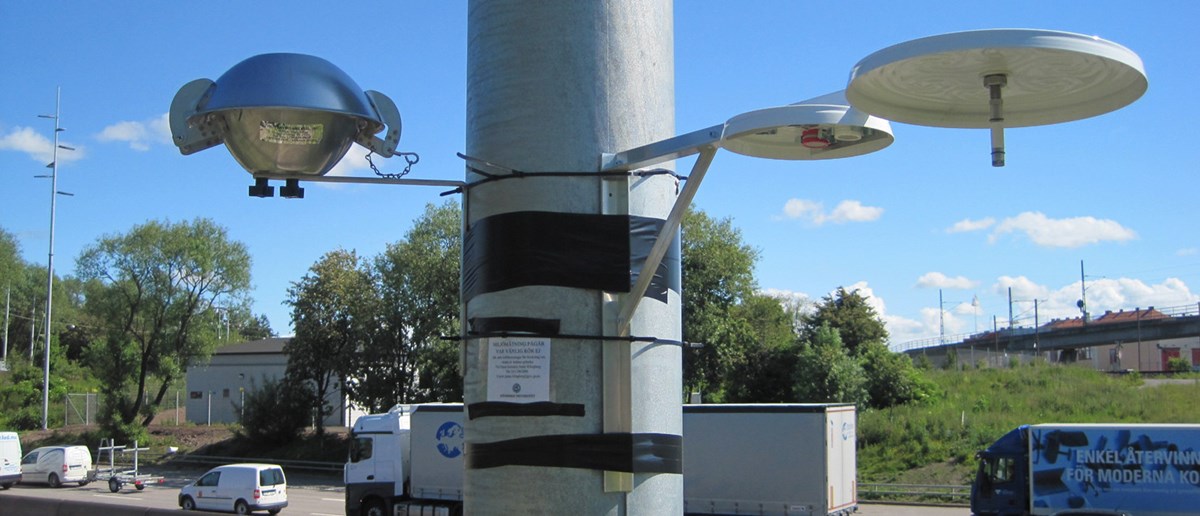Greenery improves air quality

The densification of Swedish cities in recent decades has led to the reduction of greenery. Greenery has great significance for a good and environmentally sustainable city life, and the need exists to make these values visible. Jenny Klingberg is mapping the greenery in Gothenburg and investigating how it contributes to purifying the air we breathe.
In 2015, Jenny Klingberg measured the level of air pollution in different places in Gothenburg during the spring (before the leaves appeared on the trees) and summer (with full tree foliage). The results showed that the level of air pollution is lower in areas with lots of greenery compared with places without any greenery.
Of course the level of air pollutants also depends on the proximity to roads with traffic, an important source of emissions in air pollution in city environments.
"Purifying the air we breathe is only one of the services offered us by nature", Jenny Klingberg tells us. "We take for granted that nature is going to supply us with food and fuel and other services like pollinating plants. Besides, greenery also contributes to increased quality of life by for example providing possibilities for recreation. We speak more and more often about ecosystem services in order to manifest the ecosystem's contributions to our well-being as human beings."
In 2015, Jenny Klingberg measured the level of air pollution in different places in Gothenburg during the spring (before the leaves appeared on the trees) and summer (with full tree foliage). The results showed that the level of air pollution is lower in areas with lots of greenery compared with places without any greenery. Of course the level of air pollutants also depends on the proximity to roads with traffic, an important source of emissions in air pollution in city environments.
”Purifying the air we breathe is only one of the services offered us by nature”, Jenny Klingberg tells us. ”We take for granted that nature is going to supply us with food and fuel and other services like pollinating plants. Besides, greenery also contributes to increased quality of life by for example providing possibilities for recreation. We speak more and more often about ecosystem services in order to manifest the ecosystem’s contributions to our well-being as human beings.”
Air pollution measurements
One important step to understanding how greenery can contribute various ecosystem services in the city environment, is to map out how much greenery there is, what type of greenery it is and where it is. For example, the amount of leaf surface on trees, that is, the size of the leaves' combined surface area, has great significance for several ecosystem services. Air pollutants stick to the leaves of the trees and thus purify the air. The leaves of trees can also contribute to lowering the temperature on warm summer days, both by giving shade and through the evaporation of water from the leaves. In cases of heavy rain, rainwater is caught up by the leaves of the trees. That reduces the flow of water on the hard asphalt surfaces common in city environments, thus also reducing the risk of flooding.
By measuring the light under and above the treetops, Jenny Klingberg has assessed how much light is caught up by the trees and, using that as the basis, has estimated how extensive the leaf area is in several green zones in Gothenburg. She has also tested a new method for estimating leaf area over a greater stretch of trees, by using data from laser scan over Gothenburg during which an aeroplane sent out laser pulses that bounced back and were registered. Thick forest results in many echoes from the trees but very few from the ground. The result is a map showing where there is a lot or only a little leaf area in Gothenburg. This is important information for being able to assess how effectively different green zones contribute to different ecosystem services. The results can also be used for various models in which information about leaf area is needed.
Jenny Klingberg's research is part of an interdisciplinary research project entitled "Valuation of ecosystem services provided by urban greenery". The goal of the project is to develop a method for identifying and giving an overall evaluation of the ecosystem services provided by the city's greenery. The project is a collaboration between scientists from the University of Gothenburg, the Chalmers University of Technology, the Swedish University of Agricultural Sciences, Gävle University and officials from the City of Gothenburg and the Swedish Transport Administration. The ecosystem services studied in the project are: biodiversity, noise reduction, air and water management, climate regulation, ground/soil stabilisation, recreation and well-being.






